Double tops/bottoms are relatively frequent and easy formations to identify and use. In this post, we provide a description of each pattern, implications, respective measure rule, as well as the variations described by Bulkowski.
Double tops/bottoms are relatively frequent and easy formations to identify and use. In this post, we provide a description of each pattern, implications, respective measure rule, as well as the variations described by Bulkowski.
We also review the literature on these patterns in order to find various observations as well as a theoretical explanation of their occurrence.
Double Tops
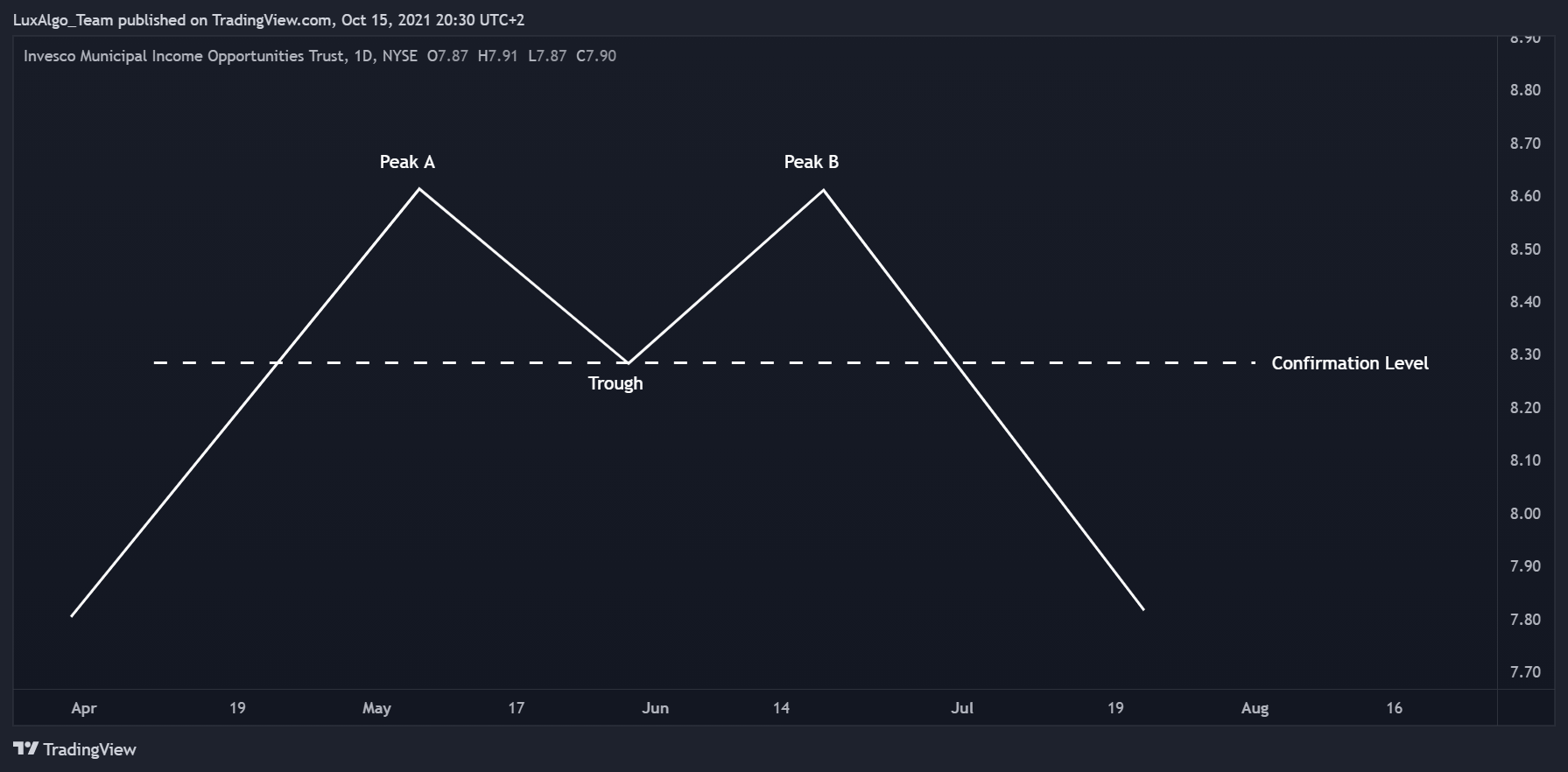
Double tops are a bearish pattern commonly found in uptrends and characterized by two consecutive peaks located at a similar level, separated by a trough. Bulkowski suggests that the absolute relative distance between the two peaks should be within 6%.
The first peak is followed by a 10/20% decline. The location of the trough in the formation forms the "confirmation" level. The price breaking this level signifies the completion of the pattern, and a short position should be opened. In order to avoid fake breakouts, Bulkowski suggests a 5% decline below the confirmation level.
Volume is generally declining during the formation of a double top .
The time separating two peaks is an important factor when it comes to determining the validity of a potential double top . This separation should be in accordance with the duration of the uptrend before the peaks. Peaks that are too close to each other are not indicative of a double top , while an excessive time separation might indicate that the prior uptrend is outdated.
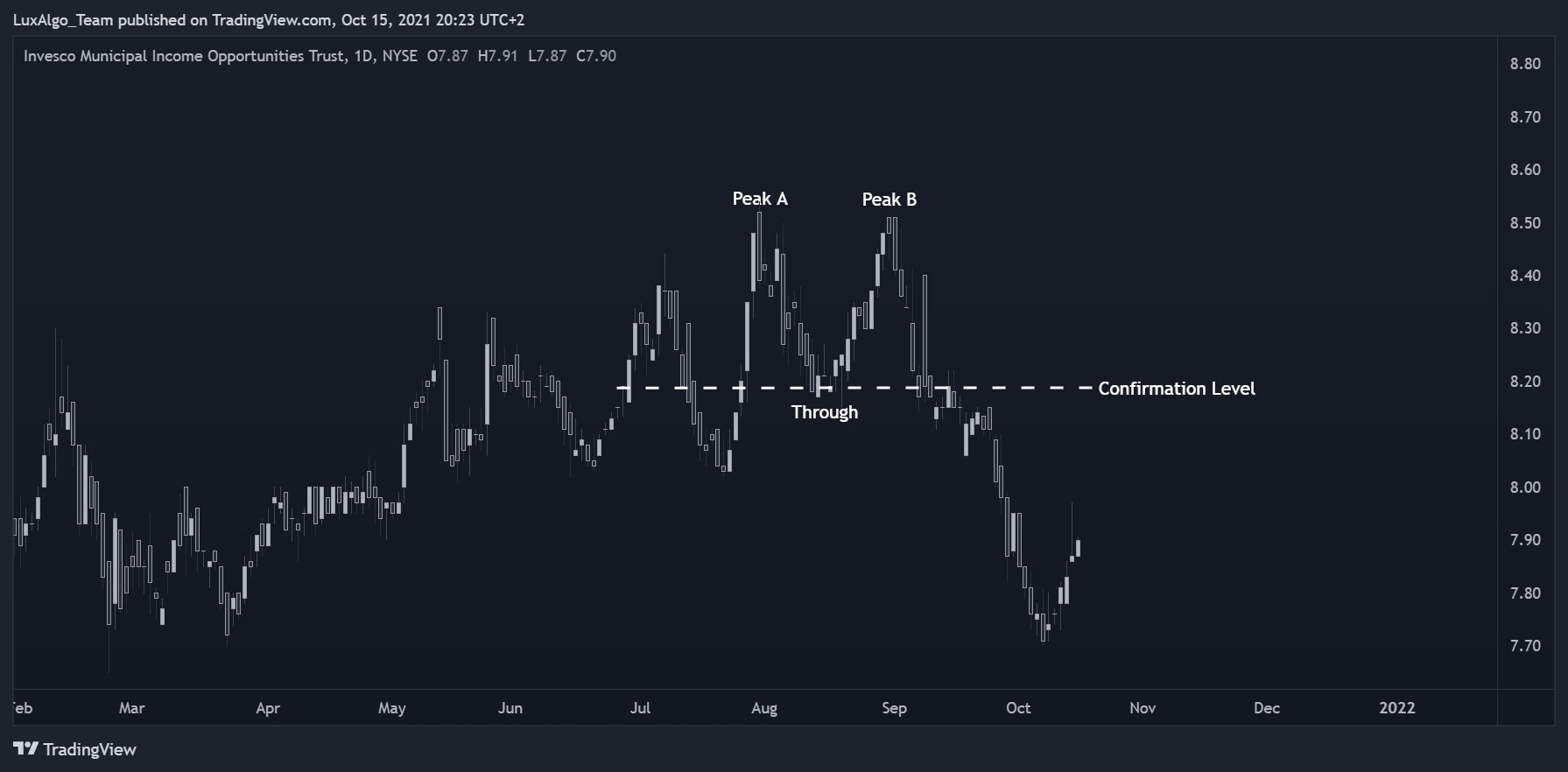
Double Bottoms
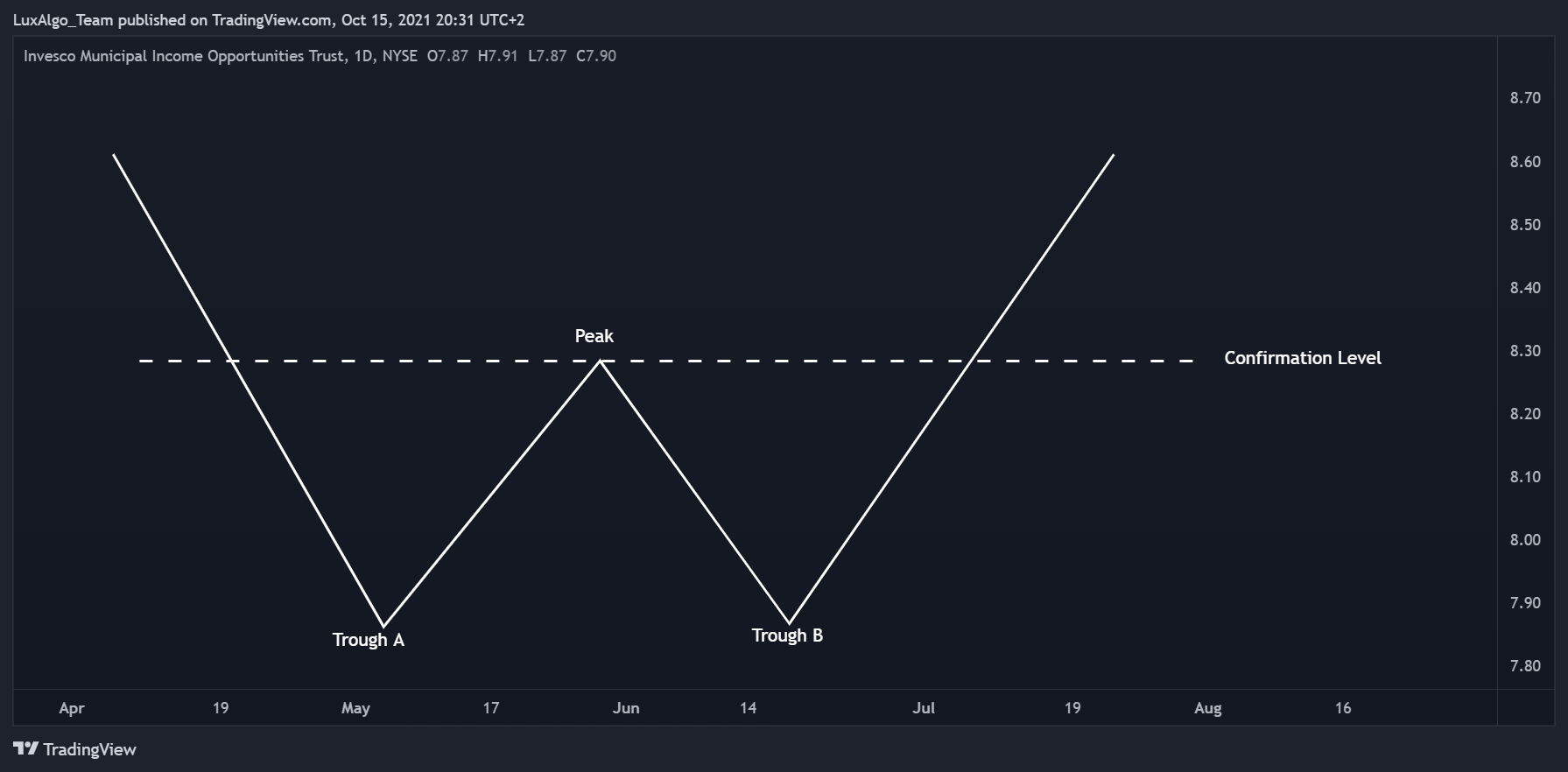
Double bottoms are a bullish pattern commonly found in downtrends and characterized by two consecutive troughs located at a similar level, separated by a peak. Bulkowski suggests that the absolute relative distance between the two troughs should be within 6%.
The first trough is followed by a 10/20% rise. The location of the peak in the formation forms the "confirmation" level, the price breaking this level signifies the completion of the pattern, and a long position should be opened. In order to avoid fake breakouts, Bulkowski suggests a 5% decline above the confirmation level.
Volume is generally declining during the formation of a double bottom .
Like with double tops, the time separation between two troughs should be in accordance with the duration of the downtrend prior to the troughs. The observations on the matter previously described for double tops also apply to double bottoms.
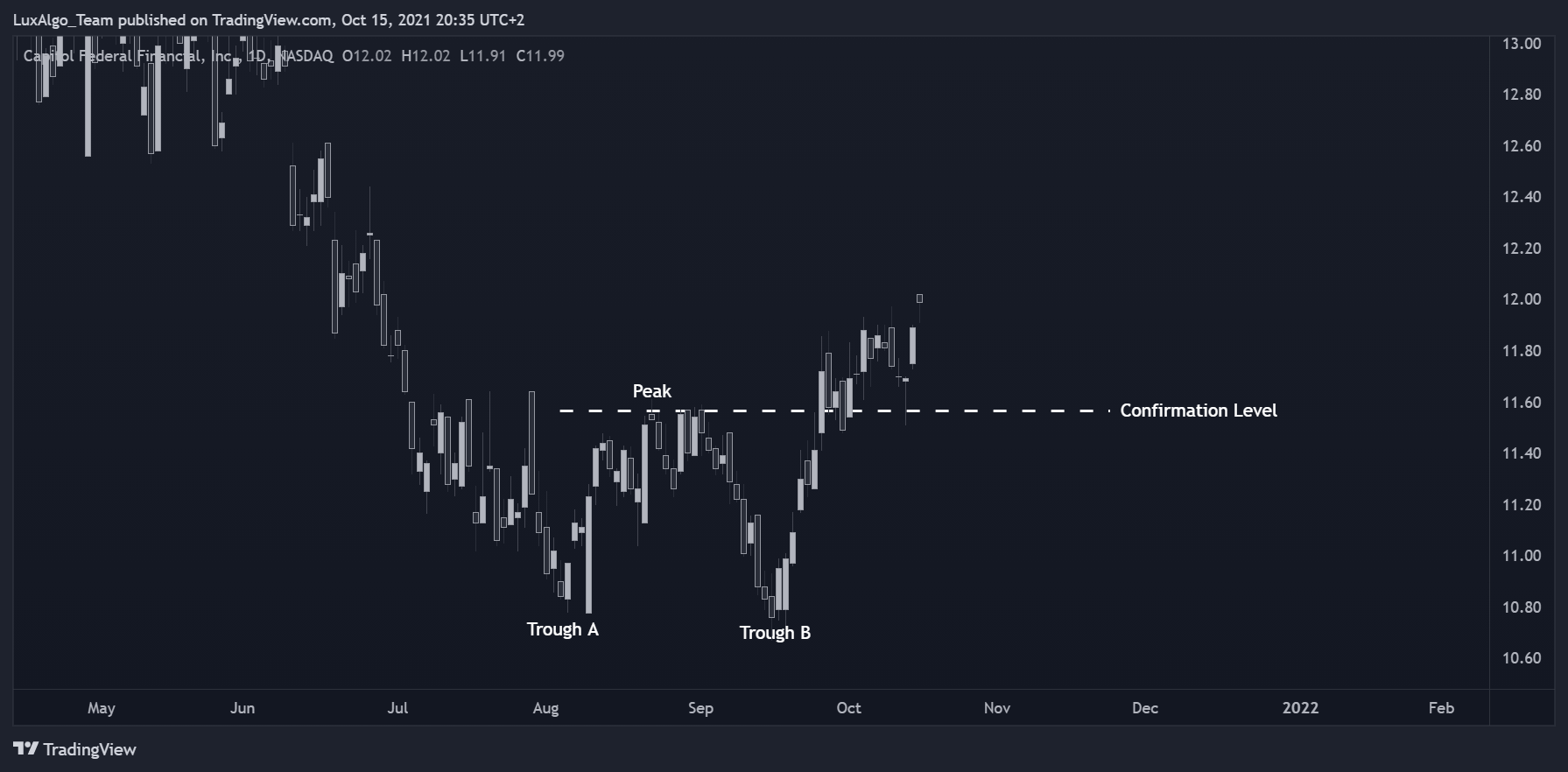
Measure Rule
The measure rule allows for the determination of the amplitude for the expected price move after a breakout of the confirmation line. This also allows for the trader to decide the location of take-profits/stop-losses when trading double top / double bottom patterns.
For double tops, the take profit is determined from the height given by subtracting the formation highest peak with the trough. The height is then subtracted from the formation trough.
For double bottoms, the take profit is determined from the height given by subtracting the formation peak with the lowest trough. The height is then added to the formation peak.
Another rule suggests an expected price movement after breakout equal to 73% of the distance between the formation highest peak and the formation lowest low.
Eve/Adam Variations
Bulkowski classifies double tops and double bottoms into four distinct types:
- - Adam & Adam
- - Adam & Eve
- - Eve & Adam
- - Eve & Eve
The term Adam and Eve is given to peaks/troughs depending on their width, with the term Adam given to narrow (V-shaped) peaks/troughs and the term Eve given to wider (U-shaped) peaks/troughs.
There aren't large scale studies quantifying the accuracy of each of these variations, Bulkowski ranks each one of them as follows (lower is better) (1):
For double tops:
- - Adam & Adam: 19 out of 36
- - Adam & Eve: 10 out of 36
- - Eve & Adam: 16 out of 36
- - Eve & Eve: 12 out of 36
For double bottoms: - - Adam & Adam: 26 out of 39
- - Adam & Eve: 17 out of 39
- - Eve & Adam: 20 out of 39
- - Eve & Eve: 5 out of 39
Note that such classification is not always used by traders.
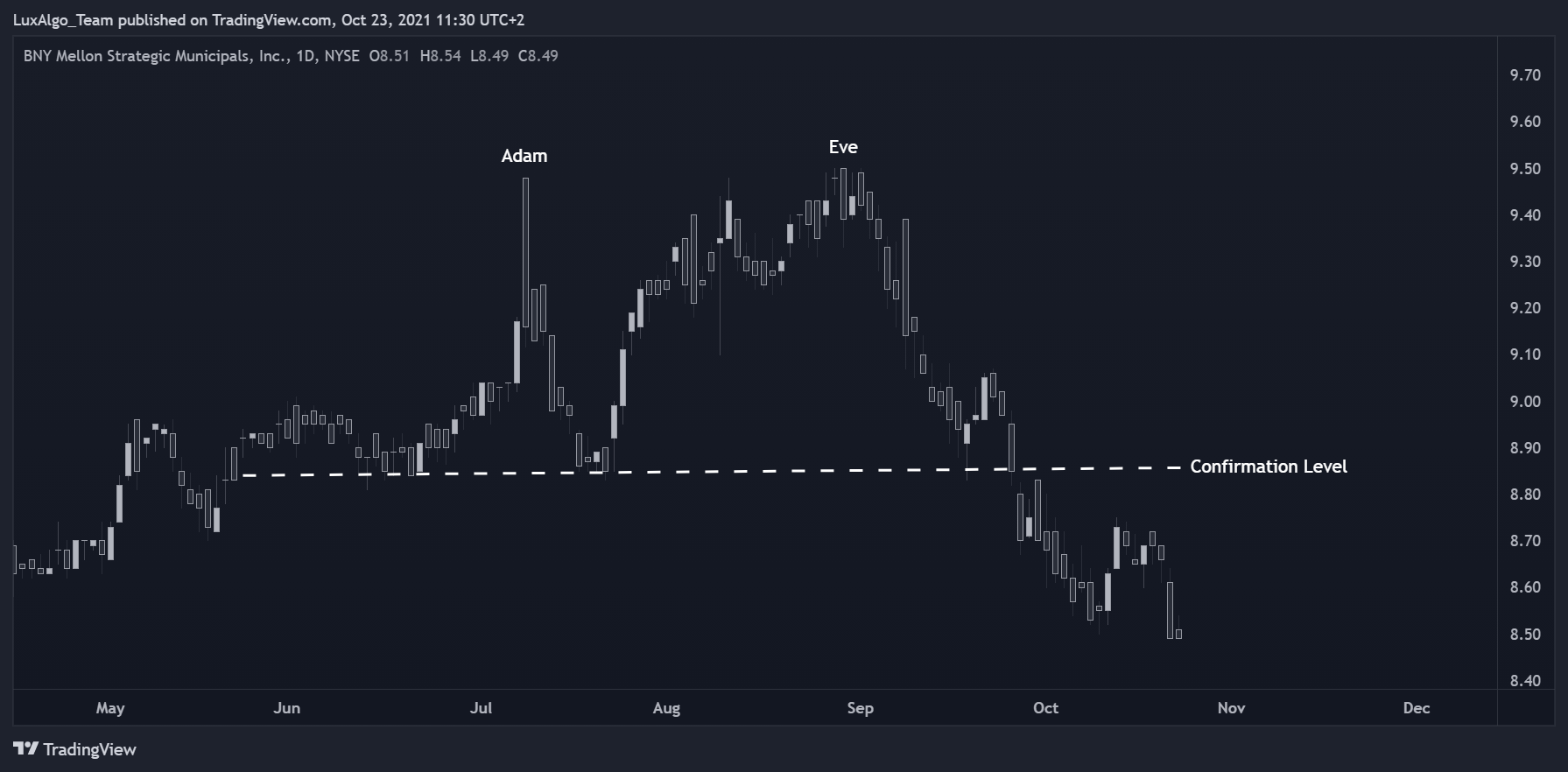
Observations
The big M and big W patternes described by Bulkowski are variations of the double top /bottoms.
The analysis conducted by Caginalp and Balevonich shows that double formations can be the consequence of identical equilibrium prices with slightly differing undervaluation (2).
References
(1) Bulkowski, T. N. (2021). Encyclopedia of chart patterns. John Wiley & Sons.
(2) Caginalp, G., & Balevonich, D. (2003). A Theoretical Foundation for Technical Analysis . Capital Markets: Market Microstructure eJournal.






